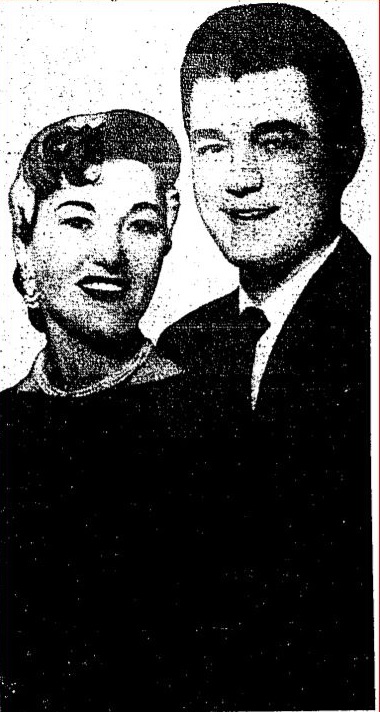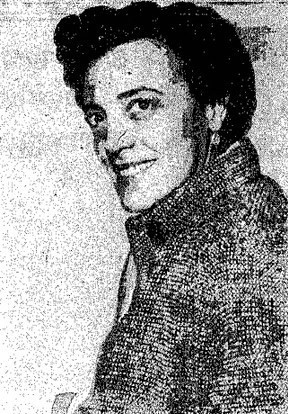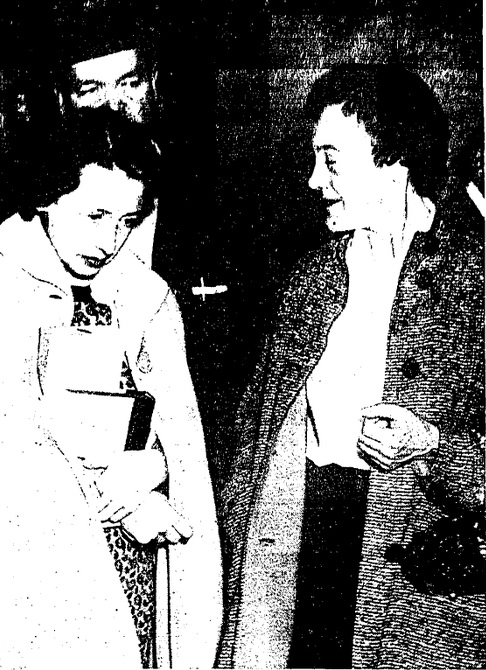Trick-or-Treat Terror:
A Mid-Century Halloween Murder
“It’s a little late for this, isn’t it?”
Peter Fabiano, the 35-year-old owner of a hair salon, had been roused to answer his doorbell just after 11 p.m. on Halloween night, 1957. He was a bit annoyed, as the bulk of the children in his suburban neighborhood had happily collected their treats hours earlier.
The tardy trick-or-treater was taller than most of the previous revelers and had an odd appearance even by Halloween standards: a “grotesque,” garishly-painted face with a domino mask and “men’s” clothing: blue jeans, a khaki jacket, and red gloves. Holding up a paper bag that concealed a gun, the disguised stranger answered the homeowner’s query in a deceptively deep voice: “No.”
Upon hearing the shot that followed Pete’s complaint about the late hour, his wife rushed to the door, but the killer had already fled. Betty, a redhaired beauty, told police she was 36 and had two teenaged children from a previous marriage. Pete, the successful owner and operator of a local beauty salon, had served in World War II. The couple appeared picture-perfect and, as if he were the artist of that ideal portrait, Pete had even been his wife’s regular hairstylist.
The strange crime occurred in Sun Valley, California, in the United States. As the crow flies, the scene was directly northwest of North Hollywood, which is where the killer scurried home after firing one well-placed bullet.
Dubbed the “Trick-or-Treat Murder” in the press, one local newspaper coined a more dramatic caption: “A murder as fantastic as the spirits of Halloween” (Greenstein). Indeed it was, not least because of the bonds among three women that led to the crime and tantalized 1950s society.
Goldyne (the most dazzling vintage name ever) Pizer was 43, a bookish medical secretary, and an unlikely prospect for a cold-blooded killer. Like Betty, Goldyne had reddish hair, although she was described as “matronly” in local news. The daughter of a furniture store owner, she graduated from Los Angeles High School in 1934 and apparently married a decade later but was either divorced or widowed when she met Joan Rabel. Joan, 40, lived in Hollywood just one mile from Goldyne’s bungalow court flat near the Sunset Strip.
Joan’s entire life is shrouded in mystery. While online articles purport that she was born in Philadelphia, Pennsylvania, a newspaper at the time reported that she emigrated to the U.S. from Lithuania. She pursued careers in photography and writing, sailing several times from the San Pedro Harbor near Los Angeles to Honolulu, Hawaii for inspiration. But in 1957, she was divorced and working for Pete Fabiano in his salon.
Here, she met the beautiful Betty. They became close, and Joan considered herself a friend of the Fabianos. However, her status as beloved family friend soon grew complicated. She claimed Betty told her that Pete had a darker side, one that was abusive and controlling. Joan began to obsess about spiriting Betty, the woman she adored, away to another kind of life.
Meanwhile, in 1957, Joan met Goldyne, who later described their relationship to the Valley Times newspaper as “coffee klatch friends” (Klein). Over coffee, Joan told Goldyne all about the Fabianos and described Pete as pure “evil.” During a three-month period, Joan talked Goldyne into becoming an unpaid hitwoman. She gave her new friend money to buy a gun and borrowed a getaway car from another friend. On Halloween, she sent a disguised Goldyne to the Fabiano residence with the gun inside a paper trick-or-treat bag. It only took one shot. Joan drove her accomplice home with one last instruction: “Forget you ever knew me.”
The next morning, Goldyne realized Joan hadn’t told her how to dispose of the gun. She took it to the chic Bullock’s flagship store in downtown Los Angeles (just across the street from the famous Clifton’s Cafeteria) and dumped it in a storage locker. Two weeks later, detectives—who probably chain-smoked and called women “dames”—found the gun and questioned Goldyne, who was eager to talk. Both women were arrested for the murder.
A candid photo from the Los Angeles Times newspaper (above) captures the two suspects outside a court hearing. Goldyne, in a chic leopard-print dress with a coat slung over her shoulders, stands with her head bowed, and an abjectly stunned, almost tearful look on her face. Joan, facing Goldyne in a plain blouse and skirt topped by a swing coat, wears a bright, chirpy smile, as though they are just two ordinary ladies out for an afternoon tea date (or coffee klatch).
The two women’s demeanor differed in court as well, with Goldyne often weeping or stricken with remorse, and Joan either “hollow-eyed” and “stone-faced” or smiling nonchalantly (Greenstein). Goldyne initially pleaded not guilty by reason of insanity. She claimed that Joan had managed to cast a Svengali-like spell over her that she was helpless to resist. The words ‘in love’ or ‘infatuation’ weren’t used, but they were implied. They were each sentenced to five years to life in prison, but it is unclear how much time they served.
Rumors about the murder abound to this day. In mid-century euphemisms for lesbian relationships, newspapers described the dynamic between Joan and Betty as “abnormal” and fraught with “jealousy.” One website, without evidence, claims that Betty and Joan were lovers and that Betty engineered the murder plot after complaining that Peter was abusive. This is unsubstantiated, as are the allegations of abuse, but it reveals the depth of mystery that lingers around this case.
Goldyne passed away in 1998 in Los Angeles.
Betty sold the beauty salon after Pete’s death and appears to have remarried in 1966. She passed away in 1999 at the age of 81 in Palm Desert, California—which made her 39 at the time of Pete’s death, not 36, as most believed her to be.
And Joan? No one knows what happened to Joan. She seems to have disappeared into thin air like a ghost—a badly-dressed ghost bent on wreaking Halloween terror.




